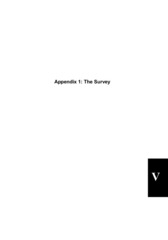| dc.description.abstract | This thesis explores the political significance of Norwegian hip hop music through the lens of public sphere theory. It empirically investigates the role of music in the public sphere, and, probes key theoretical concepts from public sphere theory and democratic theory in regards to the perspectives these offer on the political significance of music. Thus, this thesis uses specific cases studies to address a wider question, namely, how to understand aesthetics and expressive culture within the theoretical framework of deliberative democracy. The thesis consists of four independent articles, respectively exploring the following aspects of hip hop music as an aesthetic and political practice: audience, production, text and reception. The first article, a quantitative survey conducted among young politicians, asks broadly, how musical taste relates to political orientation and social background, and what genres or types of music are perceived to have political significance today. The second article is an interview study of key actors on the Norwegian hip hop-scene. Set within the framework of public sphere theory this article asks to what extent the motivations and aesthetic practices of Norwegian hip hop artists are relevant to public discourse. The third article is a musical and lyrical analysis of Lars Vaular's hit "Kem Skjøt Siv Jensen" (“Who Shot Siv Jensen?”). This article examines how the musical and lyrical characteristics of the song constitute the song as political discourse. It then discusses the expressive characteristics of the song, first, in light of recent theoretical revisions of Habermas' theory of the public sphere, and second, in light of Habermas' concept of communicative rationality. The fourth article is a qualitative analysis of the public reception of Karpe Diem's hit "Toyota'n til Magdi" (“Magdi’s Toyota”). This article charts and analyses the effects that this song had on public political discourse, and then discusses democratic value of these effects in light of public sphere theory.This thesis empirically establishes that, contrasted with other musical genres in Norway, hip hop is a genre invested with political value, and that performers maintain a general commitment to addressing socio-political issues in their music, through aesthetic practices with potentially high relevance to public discourse. The thesis further elucidates how genre-specific expressive characteristics enable hip hop to function as aesthetically constituted public political discourse, and further empirically demonstrates how popular music under certain conditions may figure as an integral part of deliberative democracy by providing valuable input to discursive processes in the public sphere. Theoretically, this thesis contributes to the existing research literature by empirically substantiating theoretical conceptions of the role of expressive culture and music in deliberative democracy. One of this thesis’ main contributions is that it demonstrates that public sphere theory offers a fruitful and distinct perspective through which to understand the politics of music. Furthermore, the thesis empirically substantiates how Habermas’ 2006 model of the political system offers an anatomy within which one can meaningfully understand the role of music in the wider context of deliberative democracy. Moreover, the thesis further contributes to scholarly debate by problematising the dichotomy between ‘rational’ and verbal communication, and, “non-rational” musical communication. | en_US |

